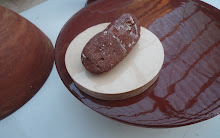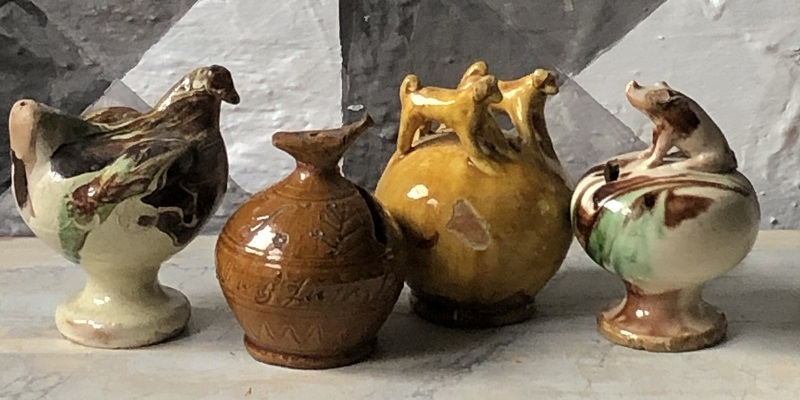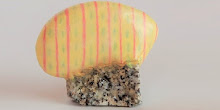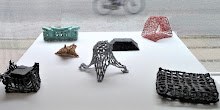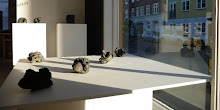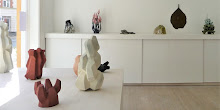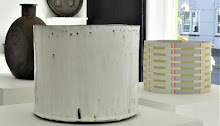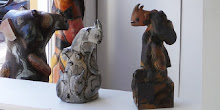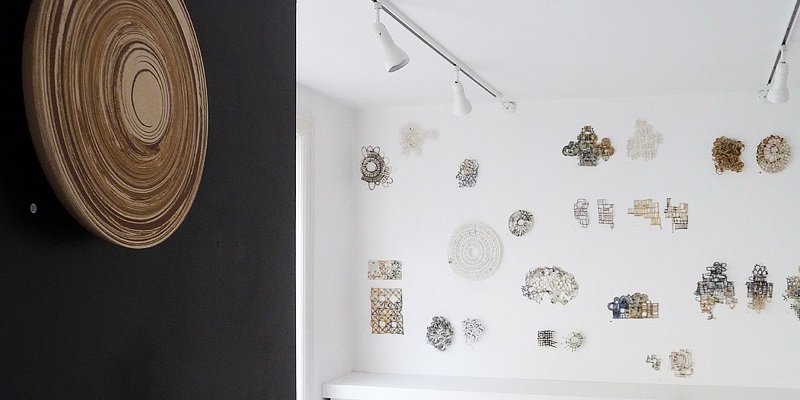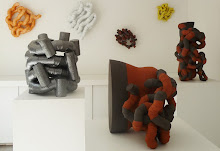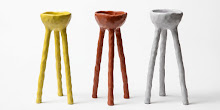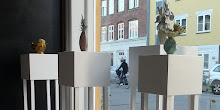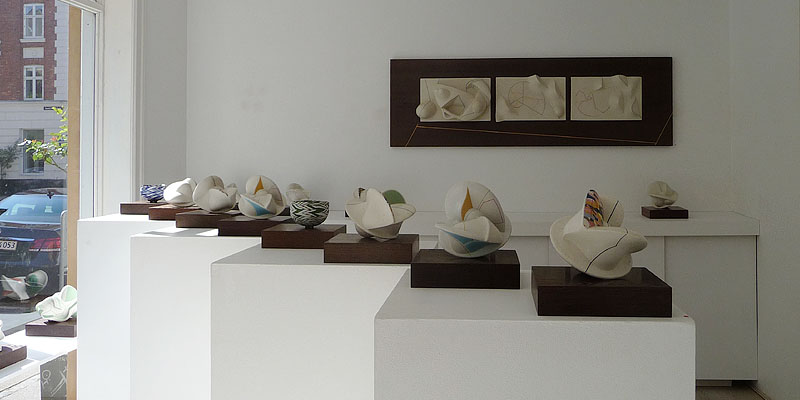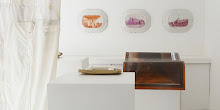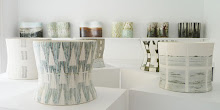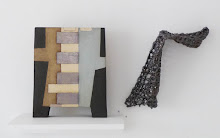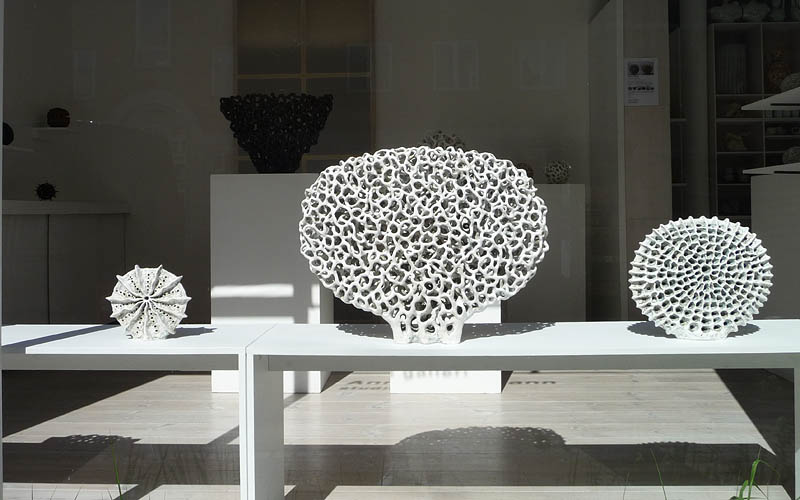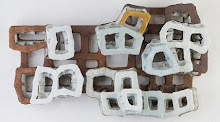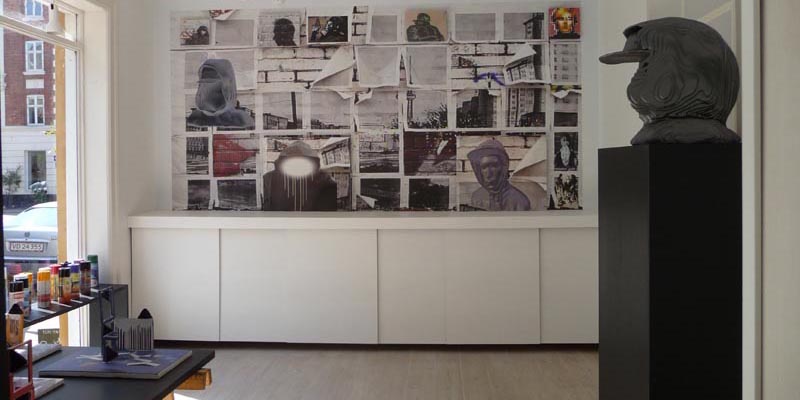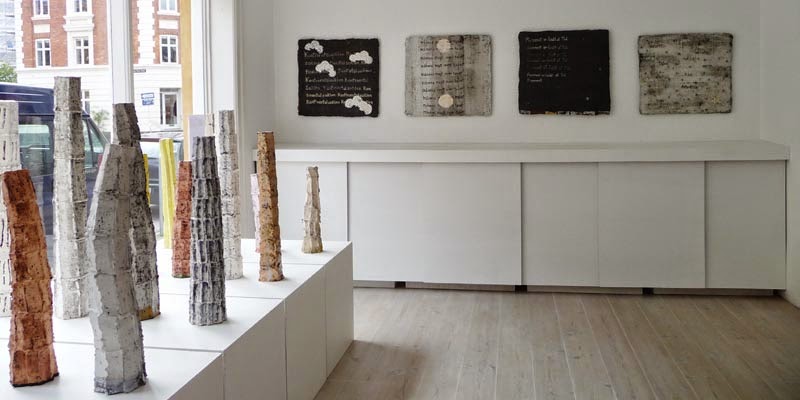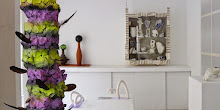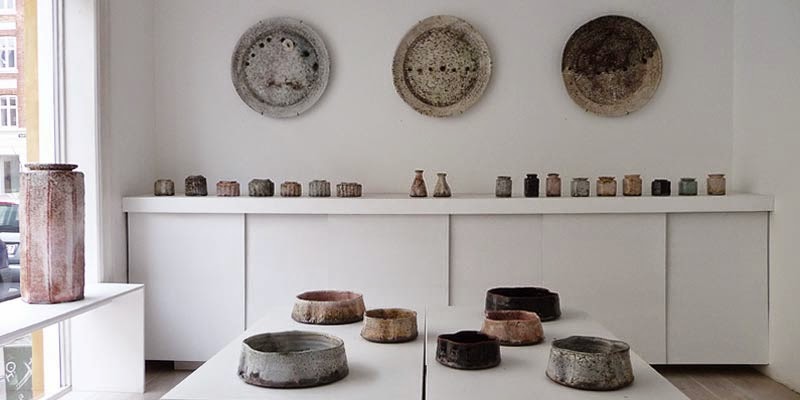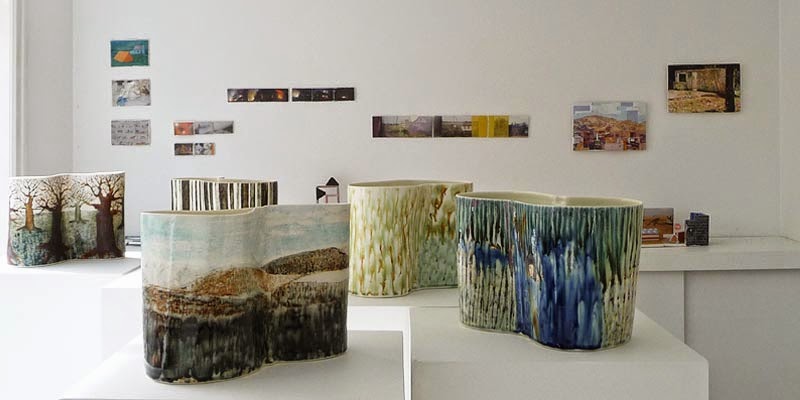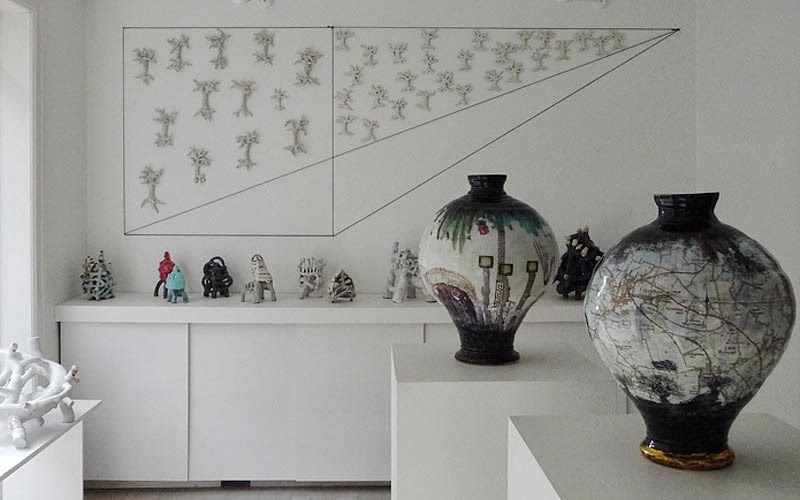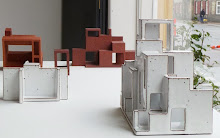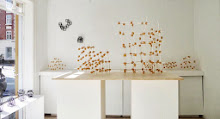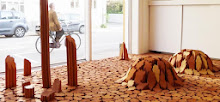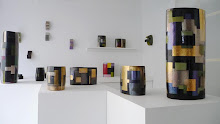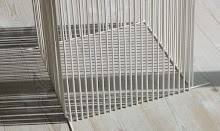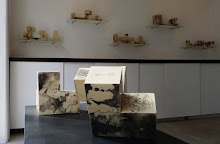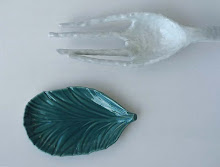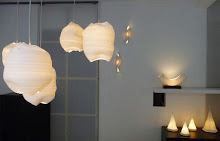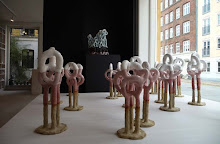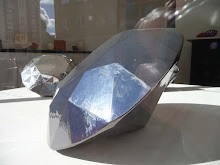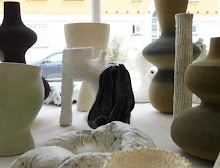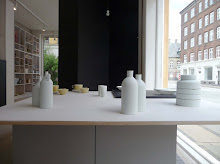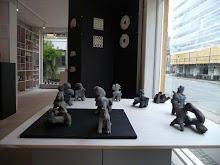



Cumulus
Bente Skjøttgaard DK
Exhibition October 2 – 28 2010
Thematic exhibition of new ceramic work by Bente Skjøttgaard.
 Bente Skjøttgaard's interest for the 'higher spheres' began two years ago, during her first visit to South Korea where she discovered the country's ceramic tradition. Soon after, her first clouds were born, sort of growths where interlaced columbine structures rise above very fine 'trunks'... (*quote of text for her exhibition “in the clouds” at Galerie Maria Lund, Paris. www.marialund.com Photo: Ole Akhøj
Bente Skjøttgaard's interest for the 'higher spheres' began two years ago, during her first visit to South Korea where she discovered the country's ceramic tradition. Soon after, her first clouds were born, sort of growths where interlaced columbine structures rise above very fine 'trunks'... (*quote of text for her exhibition “in the clouds” at Galerie Maria Lund, Paris. www.marialund.com Photo: Ole Akhøj
Bente Skjøttgaard tells: ”It is a play with forms and colour, variations of something as contradictory as making airy and light clouds in the heavy clay.
The pink colour is the colour that clouds get after the sun has set. A kind of reflection. The level lines appear as those of the horizon. I like when the wildly grown organic - that has no specific form and in reality could continue infinitely - are cut through by straight sharp lines."
www.skjoettgaard.dk
Bente Skjøttgaard DK
Exhibition October 2 – 28 2010
Thematic exhibition of new ceramic work by Bente Skjøttgaard.
 Bente Skjøttgaard's interest for the 'higher spheres' began two years ago, during her first visit to South Korea where she discovered the country's ceramic tradition. Soon after, her first clouds were born, sort of growths where interlaced columbine structures rise above very fine 'trunks'... (*quote of text for her exhibition “in the clouds” at Galerie Maria Lund, Paris. www.marialund.com Photo: Ole Akhøj
Bente Skjøttgaard's interest for the 'higher spheres' began two years ago, during her first visit to South Korea where she discovered the country's ceramic tradition. Soon after, her first clouds were born, sort of growths where interlaced columbine structures rise above very fine 'trunks'... (*quote of text for her exhibition “in the clouds” at Galerie Maria Lund, Paris. www.marialund.com Photo: Ole AkhøjBente Skjøttgaard tells: ”It is a play with forms and colour, variations of something as contradictory as making airy and light clouds in the heavy clay.
The pink colour is the colour that clouds get after the sun has set. A kind of reflection. The level lines appear as those of the horizon. I like when the wildly grown organic - that has no specific form and in reality could continue infinitely - are cut through by straight sharp lines."
www.skjoettgaard.dk
Bente Skjøttgaard participates in ”Traces”, as one of 12 artists selected by the Danish National Art Foundation for the project 'Hærvejen' at Vejen Art Museum www.kunst.dk/billedkunst/kunstidetoffrum/haervejen
About clouds...
Cumulus clouds are a type of cloud with noticeable vertical development and clearly defined edges. Cumulus means "heap" or "pile" in Latin. They are often described as "puffy" or "cotton-like" in appearance. Cumulus clouds may appear alone, in lines, or in clusters.
Cumulus clouds are often precursors of other types of clouds, such as cumulonimbus, when influenced by weather factors such as instability, moisture, and temperature gradient.
Cumulus clouds are part of the larger family of cumuliform clouds, which include cumulus, cumulus congestus, and cumulonimbus clouds, among others.
The most intense cumulus and cumulonimbus clouds may be associated with severe weather phenomena such as hail, waterspouts and tornadoes.
Cumulus humilis clouds, appearing as small- or medium-sized puffy shapes in the sky, often occur in times of fair weather.
However, cumulus clouds can grow into cumulonimbus clouds which may produce heavy rain, lightning, severe and strong winds, hail, and even tornadoes.
Cumulus congestus clouds, which appear as towers, will often grow into cumulonimbus storm clouds.
(Text freely quoted from Wikipedia) www.en.wikipedia.org/wiki/Cumulus
http://www.vildtvejrsklubben.dk/
www.dmi.dk/dmi/himlens_vejrudsigt_fraorientering.pdf
Cumulus humilis clouds, appearing as small- or medium-sized puffy shapes in the sky, often occur in times of fair weather.
However, cumulus clouds can grow into cumulonimbus clouds which may produce heavy rain, lightning, severe and strong winds, hail, and even tornadoes.
Cumulus congestus clouds, which appear as towers, will often grow into cumulonimbus storm clouds.
(Text freely quoted from Wikipedia) www.en.wikipedia.org/wiki/Cumulus
http://www.vildtvejrsklubben.dk/
www.dmi.dk/dmi/himlens_vejrudsigt_fraorientering.pdf


